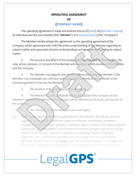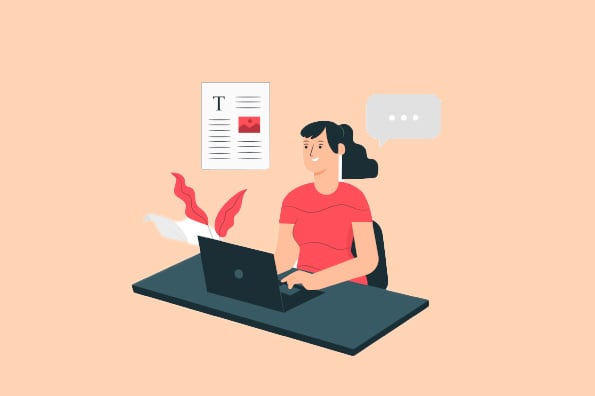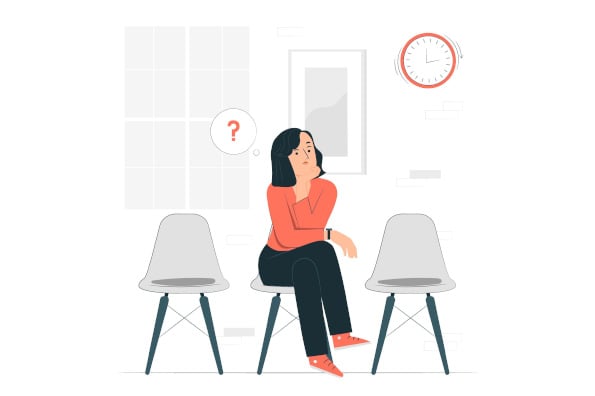Law Firm Website Must-Haves: 10 Features That Convert Visitors Into Clients
Most law firm websites fail at their most important job—turning visitors into clients. You might have all the right information, but if your site...
12 min read
LegalGPS : Feb. 22, 2025
You offer free consultations to bring in new clients, but after the call, they vanish—no follow-up, no signed engagement letter, nothing. You’re left wondering: What went wrong?
This is a problem many attorneys face. You get excited about a promising lead, you dedicate time to help them, and then they disappear. The reality is, a free consultation alone doesn’t guarantee paying clients. Without the right approach, it can actually work against you—giving away valuable legal insight without a return.
But what if you could shift how you handle consultations and drastically improve your conversion rate? That’s exactly what this guide will help you do.


Legal GPS Pro
Protect your business with our complete legal subscription service, designed by top startup attorneys.
Many attorneys make the mistake of turning consultations into free legal advice sessions. They get into the weeds of the law, offer potential strategies, and answer detailed “what-if” questions—only for the potential client to walk away with everything they need to do it themselves or shop around for the cheapest lawyer.
If your consultations feel more like mini legal workshops, you’re setting yourself up to be used, not hired.
Think of your consultation as a diagnosis, not a treatment. Your goal is to help potential clients understand:
But what you shouldn’t do is give them a roadmap to solve their issue on their own. If they can take your advice and execute it without you, there’s no reason for them to hire you.
A startup founder comes in for a free consultation, asking about how to structure their business to avoid liability. Instead of explaining exactly how to draft an operating agreement or set up contracts, the lawyer says:
"Based on what you’ve told me, there are serious liability risks if your contracts aren’t airtight. The good news is, I can draft everything you need to protect your business and ensure compliance. If we move forward, I’ll take care of all the documentation, so you don’t have to worry about gaps that could put your business at risk."
This approach highlights the stakes and the solution—but it doesn’t give the prospect a step-by-step playbook they can implement on their own.
By shifting your consultations from free legal work to a structured, strategic session, you’ll filter out those looking for free advice and attract serious clients who are ready to move forward.
Not every person who books a free consultation is a real prospect. Some people are just looking for free legal advice, while others are price-shopping and will never hire you. The problem isn’t just wasted time—it’s that these people fill up your calendar, keeping you from speaking with serious potential clients who are actually ready to hire an attorney.
So how do you avoid this? You need a process that filters out bad leads before they ever get on a call with you.
The first step is making sure you control who gets a consultation. If you currently allow anyone to book freely through your website or phone line, you’re inviting people who may not be serious about hiring a lawyer. Instead, implement a pre-screening process to qualify leads.
One simple way to do this is by requiring a short intake form before booking. This form should include a few key questions that help you determine if they’re a good fit. You don’t need to overcomplicate it—just enough to weed out the ones looking for free advice.
For example, let’s say you’re a family lawyer handling divorce cases. Your intake form could ask:
The last question is crucial—if they say no, you already know they’re not ready to commit, and you can save yourself the time.
Another way to screen leads is to require a brief phone call before scheduling a full consultation. A five-minute chat can help you determine whether this person actually needs your help, or if they’re just looking for free information.
For example, a business attorney might ask:
"What specific challenges are you facing with your contracts?"
If the response is something vague like, “I just want to know what my options are,” that’s a sign they might not be serious about hiring. On the other hand, if they say, “I need a contract drafted for a deal I’m closing next week,” that’s someone who has urgency and is likely to move forward.


Legal GPS Pro
Protect your business with our complete legal subscription service, designed by top startup attorneys.
Once you’ve filtered out bad leads, the next challenge is framing the consultation correctly. If you don’t set the right expectations upfront, people may still see it as a free legal Q&A rather than a step toward hiring you.
The best way to handle this is to be direct about what the consultation is—and what it isn’t.
Before the consultation even happens, you need to communicate clearly what the session will cover you can do this by sending a confirmation email that lays out the agenda. This email should make it clear that:
Here’s an example of how a business lawyer might phrase it in an email:
"Hi [Client’s Name],
Thanks for scheduling your free consultation. Here’s what to expect during our call:
This session is meant to assess your legal needs, not to provide specific legal advice. Looking forward to speaking with you!
[Your Name]"
By doing this, you set expectations early, which prevents awkward moments during the call where a prospect asks for free legal advice.
Many prospects will try to take control of the conversation, asking, “What are my legal options?” or “Can you just tell me how I should handle this?”
When this happens, you have to redirect the conversation immediately.
A great way to do this is to open the consultation with a clear framework, such as:
"Here’s how today’s call will work. First, I’ll ask some questions to understand your situation. Then, I’ll explain the best path forward and how we can help. If we’re a good fit, I’ll walk you through the next steps to get started."
The way you structure this conversation is what determines whether a client decides to hire you—or walks away without committing.
Some attorneys approach consultations too passively, letting the potential client dominate the conversation or treating it like an informal chat. This is a mistake. Instead, you should lead the conversation with a structured framework that positions you as the clear solution to their problem.
The first part of the consultation should be focused on understanding the client’s issue—but not in a way that turns into a free legal workshop.
Attorneys make the mistake of going too deep into legal analysis at this stage. They ask for every single detail, start identifying potential legal arguments, and before they know it, they’ve given away everything for free.
Instead, think of this phase as a doctor’s diagnosis. A good doctor doesn’t immediately start prescribing medication or explaining complex medical procedures—they first listen, ask questions, and confirm the problem.
Here’s how you can do the same:
By keeping this part of the consultation focused and controlled, you avoid getting pulled into a free legal advice session.
Now that you’ve diagnosed the problem, your client is expecting you to tell them what needs to happen next. This is where many attorneys make a critical mistake: they go into too much detail about the legal strategy.
If you tell them exactly how to handle their problem, you’re giving them everything they need to walk away and do it themselves—or worse, take your advice to a cheaper lawyer.
Instead, your goal in this step is to paint a clear picture of what needs to be done—without giving them the blueprint to do it on their own.
Here’s an example of the difference:
What NOT to say:
"You’ll need to file XYZ motion under section 123 of state law. You’ll also have to include specific case law references to support your argument, which means researching similar cases. If the court rejects it, you’ll need to appeal using Form ABC."
This is free legal advice. The client now knows exactly what to do, and they don’t need you to do it.
What TO say instead:
"There are legal steps we need to take to resolve this, and it’s important that they’re handled correctly. If they’re done improperly, it could delay your case or hurt your chances of success. Our firm will take care of the filings, ensure the right legal arguments are made, and handle any court communications so you don’t have to worry about it."
This version positions you as the expert while making it clear that they need your help to get the result they want.


Legal GPS Pro
Protect your business with our complete legal subscription service, designed by top startup attorneys.
This is where you convert the prospect into a paying client. Many attorneys hesitate at this stage, either because they’re afraid of sounding too “salesy” or they assume the client will naturally ask about hiring them.
Don’t make this mistake. Be direct and confident when presenting your offer.
Here’s how to transition smoothly from discussing the legal solution to signing them on as a client:
By asking for the business directly, you remove any ambiguity about what happens next. If you don’t clearly ask for the sale, clients will often leave saying, “I need to think about it,” and never return.
Not every client will immediately say yes. Some may hesitate due to cost concerns or uncertainty. When this happens, don’t just accept it and end the call—address their hesitation head-on.
If they say, “I need to think about it,” respond with:
"Of course. What questions do you still have? I want to make sure you have all the information you need to make the right decision."
If they say, “I need to talk to my spouse/business partner,” ask:
"That makes sense. Would it help if we set up a quick follow-up call so they can ask any questions directly?"
If they say, “I’m not sure I can afford it,” offer a structured payment plan if possible:
"I understand. To make this easier, we offer flexible payment options so you can get started without financial strain."
The key is not to let the conversation end without a clear next step. Either they hire you, or you schedule a follow-up—never leave things open-ended.
Clients don’t like feeling pressured—but they do respond to real reasons to act now. The key is to position urgency in a way that aligns with their interests.
Many legal issues get worse the longer a client waits. If you can help them understand what’s at stake, they’ll feel a natural urgency to move forward.
A criminal defense attorney might say:
"The sooner we start working on your case, the better. Evidence can disappear, witnesses can become unreliable, and the prosecution is already building their case against you. Acting quickly gives us the best chance at a favorable outcome."
By emphasizing the real risks of inaction, you make it clear that waiting isn’t just a passive decision—it’s a potentially costly mistake.
Another way to create urgency is to offer something valuable that expires if they don’t act quickly.
For example:
For instance, a family lawyer might say:
"If we start the process this week, I’ll include a customized parenting plan at no additional cost, which will help you establish a clear custody arrangement upfront."
This type of incentive makes the client feel like they’re getting something extra by acting now, rather than being pressured into a decision.
Most attorneys don’t have unlimited availability—but clients don’t always realize this. If they think they can come back in a month and hire you with no issue, they’ll put off the decision.
To counter this, let them know that your time is not always available.
For example, a personal injury lawyer might say:
"I only take on a limited number of cases at a time to ensure that each client gets my full attention. Right now, I have space for one more case, and I expect it to fill soon. If you’re ready, we can move forward today and secure your spot."
This works because people want what they think they might lose. If they believe they could miss their chance to work with you, they’ll be much more likely to act quickly.
Even with the best consultation, some clients won’t commit on the spot. That doesn’t mean they’re lost—it just means you need a strong follow-up system to nurture them until they’re ready to move forward. Most people need multiple touchpoints before making a decision. If you don’t follow up, you’re leaving money on the table.
A strong follow-up system ensures that no lead goes cold—and it increases your chances of closing the deal. Here’s how to do it right:
After your consultation, send an email (or even better, a phone call) within one business day. This keeps the momentum going and reminds them why they should move forward.
A strong follow-up email should:
Example Follow-Up Email from an Estate Planning Attorney:
"Hi [Client’s Name],
It was great speaking with you yesterday about your estate planning needs. As we discussed, ensuring that your estate is properly structured will protect your family and assets from potential legal disputes and unnecessary taxation.
Since you don’t currently have a will or trust in place, any delay in setting this up could leave your estate vulnerable if something unexpected happens.
I’d love to help you get everything in order. If you’re ready, we can start the process today. I’ve attached our engagement agreement—just sign and return it, and we’ll begin immediately. Let me know if you have any questions.
Looking forward to working with you.
[Your Name]"
This approach reminds them why they need to move forward while keeping the decision process simple.
If you don’t get a response from your first follow-up, don’t assume the client isn’t interested. They might just be busy or need an extra nudge.
A second follow-up should be shorter and more direct than the first.
Example Follow-Up Message from a Business Lawyer:
"Hi [Client’s Name],
Just wanted to check in to see if you had any questions about moving forward. I know you mentioned wanting to protect your business from liability issues, and I want to make sure you have everything you need to make the best decision.
Let me know if you’re ready to get started or if there’s anything else I can clarify for you.
Looking forward to hearing from you.
[Your Name]"
This keeps the conversation open without being pushy.
If the client still doesn’t commit, they might not be ready now—but that doesn’t mean they won’t need your services in the future. Stay top-of-mind by continuing to nurture the relationship.
A divorce attorney, for example, might send a follow-up a month later saying:
"I recently published a guide on how child custody agreements work in [your state]. Since this was something we discussed in your consultation, I thought you might find it helpful. Let me know if you have any questions!"
A free consultation isn’t just a meeting—it’s an opportunity to convert a lead into a paying client. But without the right approach, it can also be a time-waster that leads nowhere.
To recap, here’s how you turn free consultations into consistent revenue:
If you’ve been struggling to convert leads, start by making one change today. Whether it’s setting clearer expectations, adding a follow-up system, or refining your sales pitch, even a small improvement can make a big difference in your firm’s growth.

Legal GPS Pro
Protect your business with our complete legal subscription service, designed by top startup attorneys.

100+ legal templates, guides, and expert advice to protect your business.
Trusted by 1000+ businesses
Table of Contents

Most law firm websites fail at their most important job—turning visitors into clients. You might have all the right information, but if your site...

Running a small law firm means wearing a dozen different hats—attorney, administrator, marketer, and sometimes even tech support. You know you need a...

Are you a solo attorney trapped in the billable hour hamster wheel? The traditional hourly billing model might be stunting your practice's growth and...